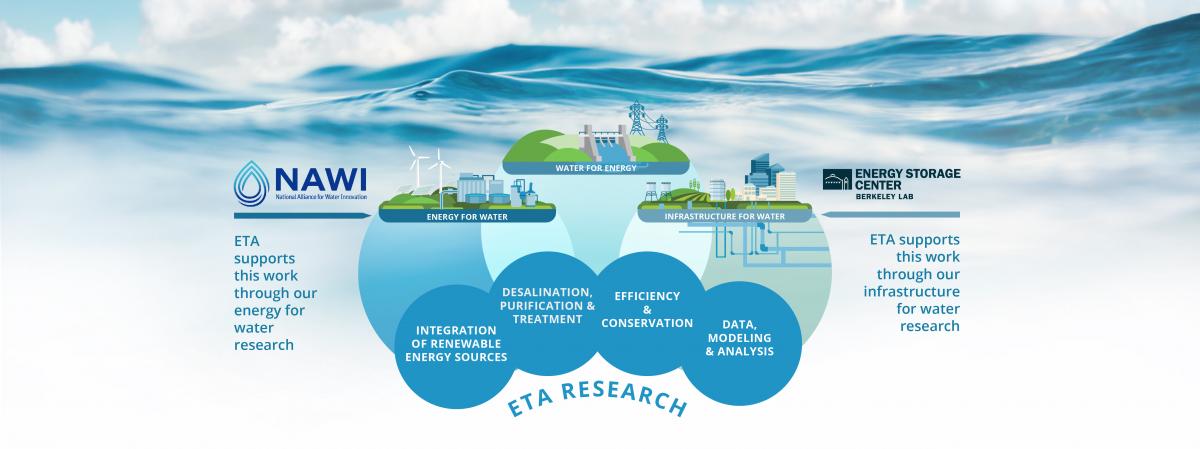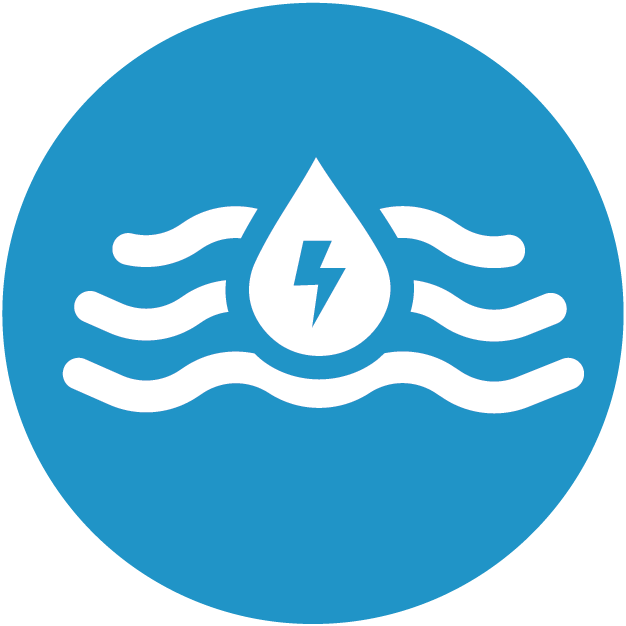Water–Energy Nexus
Ten-Year Goal
Demonstrate an integrated system of nontraditional water treatment and renewable energy generation sources, and define the feasibility and optimization paths for development of full-scale desalination system(s) with significant cost reductions.

The Challenge
 Drought, population growth, energy use, land use, socioeconomic changes, and a shifting climate increase water demand and exacerbate pressure on water and energy infrastructure. Though the market has already partially responded to these challenges through adjustments in water and energy management practices and policies, additional action is needed to diversify sources and increase resilience of those systems. Historically, interactions between energy and water have been considered on a regional or technology-by-technology basis. Despite their interdependency, energy and water systems have been developed, managed, and regulated independently . This approach has proven particularly ineffective in power generation (both traditional and renewable), manufacturing, mining, agriculture, and large urban systems.
Drought, population growth, energy use, land use, socioeconomic changes, and a shifting climate increase water demand and exacerbate pressure on water and energy infrastructure. Though the market has already partially responded to these challenges through adjustments in water and energy management practices and policies, additional action is needed to diversify sources and increase resilience of those systems. Historically, interactions between energy and water have been considered on a regional or technology-by-technology basis. Despite their interdependency, energy and water systems have been developed, managed, and regulated independently . This approach has proven particularly ineffective in power generation (both traditional and renewable), manufacturing, mining, agriculture, and large urban systems.

Research Summary
At Berkeley Lab, the mission of the Energy Technologies Area’s (ETA’s) Water–Energy Nexus Initiative is to lead and contribute to the U.S. transition to more resilient coupled water–energy systems. Water research can take over a decade to be commercialized, and widespread adoption of infrastructure technologies can take even longer. The ETA seeks to shorten these time frames by leading and coordinating science and technology efforts at the intersection of water and energy, and across the spectrum of technology readiness levels. The goal is to enable the production of cost-competitive clean water from traditional sources and nontraditional water sources such as seawater, produced water from oil and gas, and wastewater from power generation. This work will help transform the energy sector’s produced water from a waste product to a valuable resource, lower freshwater use intensity in U.S. power plants, improve agricultural water use efficiency, expand water reuse and resource recovery, and accelerate the deployment of smart grid-enabled water supplies. Our strategy includes an aggressive science and technology approach that addresses the impacts of demographic stress and extreme weather events on the management of our nation’s water and energy resources.
For more details on this initiative, take a look at ETA's 2021 Strategic Plan.
